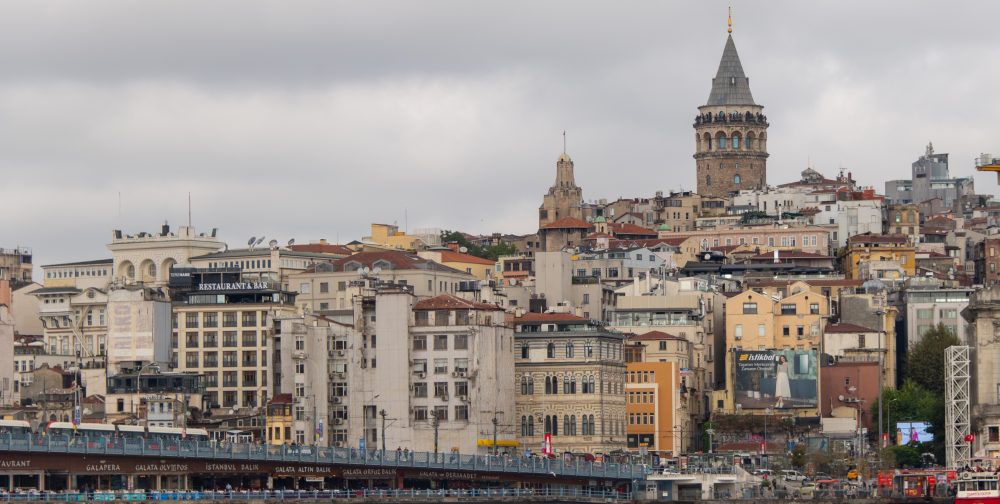After 10 days of sun and salt and sharks and palms, I did the Malagasy version of planes, trains and automobiles (pirogue and taxi and speedboat and 4×4), meeting up with a local guide and driver to see the national parks in the north of the country. On that first day, I had a bit of shell-shock with a 10 hour drive on terrible, not-quite-paved roads, from the port of Ankify to area near Joffreville. En route, I am sure I inhaled half a kilo of red clay dust, had a pit stop in one of the most unusual outdoor toilets I’ve ever experienced, and fully realised the value of a sea breeze as we drove towards dry season in the interior (hint: 39C feels quite different inland v the coast!).
I spent the hours in the car with a traveller’s guilt: the conflicting feelings of being privileged in affording this kind of trip while simultaneously observing straggly stick homes with no running water, outhouses, skinny zebu, over-farmed land; but also thriving local markets, self-sufficient small villages, and wide beaming smiles on everyone I encountered. I consider how complicated life back home is in comparison.

On this first day, a “travel day”, the saving grace was a quick stop for a nature thingy, a tsingy called Tsingy Rouge. You leave the main highway and wend through a maze of sand and clay-dirt roads to reach it, diggers and roadwork vehicles everywhere. They’re digging and paving in the name of modern infrastructure. As I watched the small rustic villages go by through my window, I considered whether modernization is really worth it. Water, yes. Sanitation facilities, of course. But the chaos these new roads will bring, and the tourism… can the ecosystems sustain the influx?
Tsingy was a new term for me. In Malagasy, it means “the place where one cannot walk barefoot.” As I was to learn, so named for good reason.
Tsingy Rouge is Madagascar’s miniature Grand Canyon. It’s a red (rouge) geologic marvel, formed of eroded laterite and looks like some prehistoric giant played sand castles and then got bored half-way through. It reminded me of a cross between a model of Bryce Canyon and a salt mine, out in the open even though it looks like the bottom of a cave. This place looks like it should be underwater – and it probably was, a million or so years ago – the formations were carved by the rivière Irodo.
At the time, I was road weary and dusty from the drive, but the short walk down into the tsingy and then the sight of some gray-headed lovebirds nesting in the red clay helped me reset. At the lodge that night, I chalked (clayed?) the day off to what it was, and delighted in the thought that tomorrow we’d be hiking through Parc National Montagne D’Ambre, Amber Mountain, and the hunt for chameleons would begin in earnest.
Zoom in on this map to see the different places I visited during the trip.
A slight detour about the climate of Madagascar. As the 4th largest island on this planet, Madagascar is simply enormous. So the country encompasses rainforest through savannah, with a dry season (of which we were at the end) and a rainy season. From zebu to man-on-the-street, it seemed like everyone was looking forward to the rains! In a recent article, The Guardian highlights that these inconceivable temperatures are a clear result of climate change. Entering Amber Mountain was like travelling through different worlds. On the one hand, it was hot and humid, and as we got into the forest the air turned almost sweet. On the other hand, it was so dry that the riverbeds were completely dried up and one of the waterfalls we were to see, there was not enough water for it to actually fall. I was thankful for the lush forest canopy to provide shade.
We hiked to the Cascade Sacrée (Sacred Waterfall) and the Mille Arbres (Path of a Thousand Trees) trail, all the while feeling ensconced in a terrarium separate from the hot and humid outside world.
Montagne D’Ambre feels like its own bioverse, with endemic birds, lemurs and chameleons found specifically in this reserve. It was very cool to actually find some of these critters, including the Amber Mountain rock thrush, the Amber Mountain chameleon, and the very adorable and teeny Mount D’Ambre leaf chameleon (note how small he is on my hand!). While not exclusive to Amber Mountain, the endangered Sandford’s brown lemurs were an amazing find, as was the very weird and master of camouflage leaf-tailed gecko (can you spot it in the last photo in this slideshow?).
Possibly the highlight of the day came as we were exiting the park and really more focused on lunch than seeing any more critters, since the day was already full of such wonderful sightings. As we were driving down the main reserve road, we spotted a beautiful little pygmy kingfisher perched on a branch where he gave us a fantastic view of his bright plumage.

Of all the wildlife experiences on this trip, I think this one wins for the most unexpected sighting. The grin and sheer joy on my guide’s face at the sighting was absolutely priceless.
And, no, I didn’t get a photo of that.
This concludes our tour of Parc National de la Montagne D’Ambre. Stay tuned for Part IV including the most horrible thing in Madagascar and why you need shoes. In other words, next up is hiking in the tsingys of Ankarana.



































































